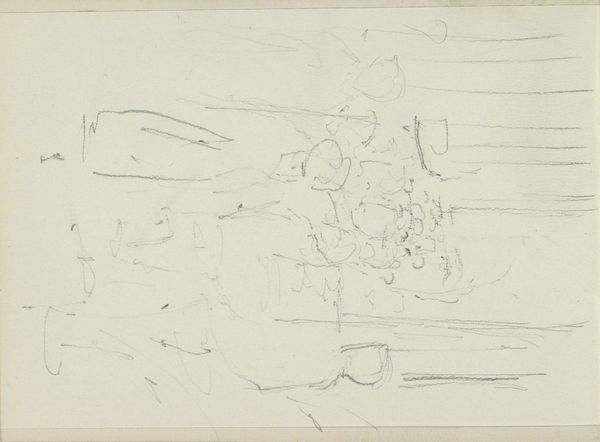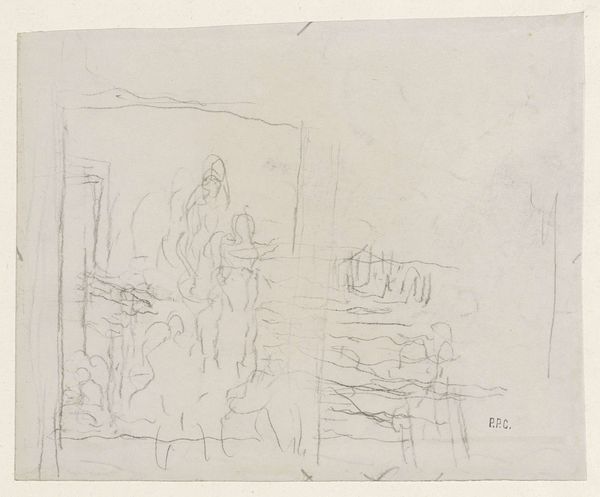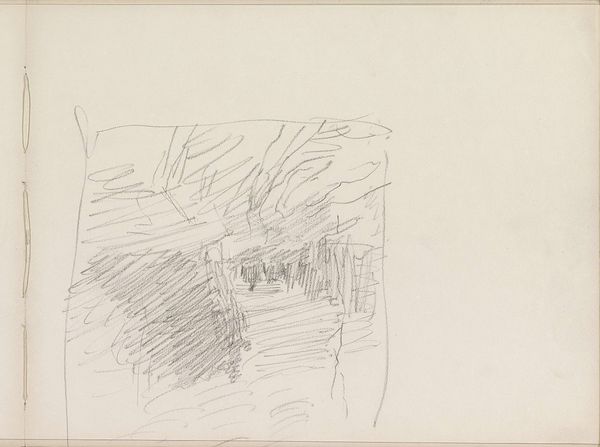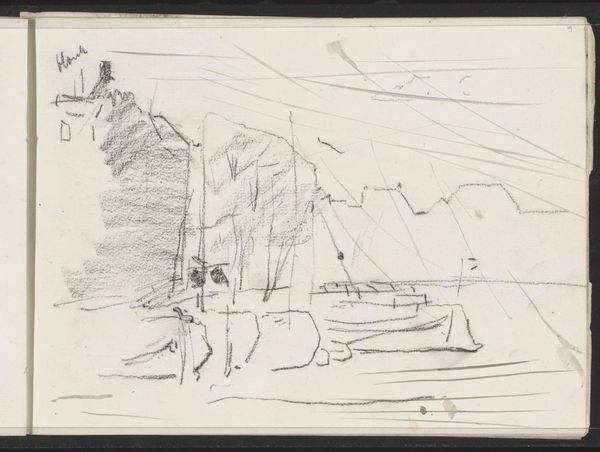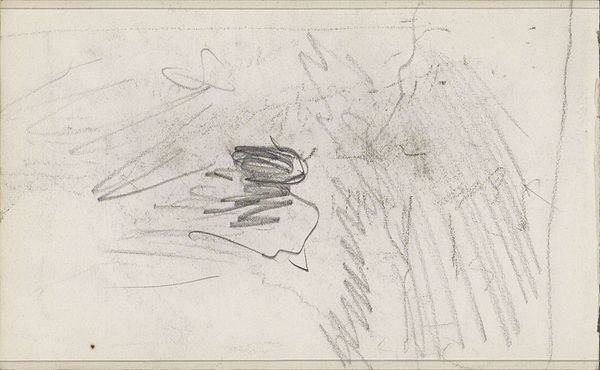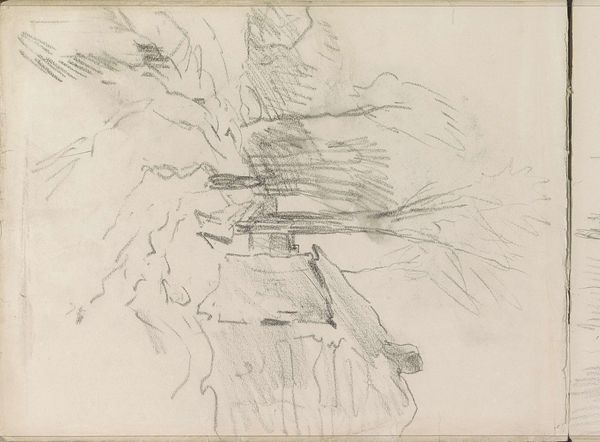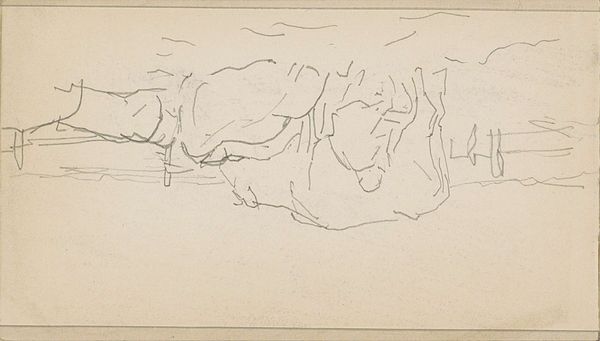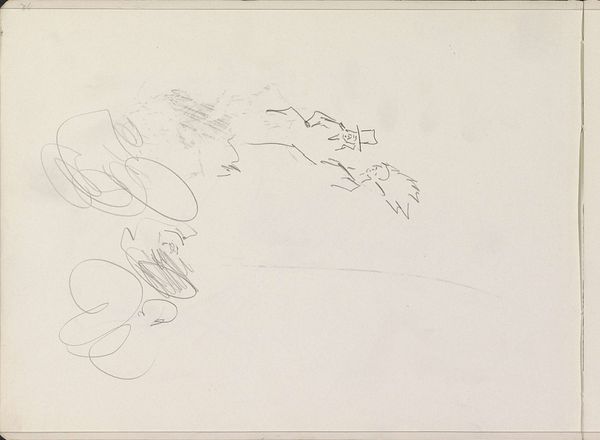
drawing, paper, pencil
#
drawing
#
quirky sketch
#
dutch-golden-age
#
impressionism
#
incomplete sketchy
#
landscape
#
paper
#
form
#
personal sketchbook
#
idea generation sketch
#
sketchwork
#
ink drawing experimentation
#
pencil
#
line
#
sketchbook drawing
#
storyboard and sketchbook work
#
sketchbook art
#
initial sketch
Copyright: Rijks Museum: Open Domain
Curator: This evocative drawing is by Anton Mauve, a Dutch artist associated with the Hague School. The Rijksmuseum holds this work, titled "Herder met een schaapskudde," which translates to "Shepherd with a Flock of Sheep," and it dates from approximately 1886 to 1888. Editor: It's barely there! Just a whisper of an image, like a half-formed memory. I see the ghost of a landscape, figures suggested rather than defined. It has a lovely, ephemeral quality. Curator: Precisely. It’s rendered with a lightness of touch using pencil and perhaps a bit of ink on paper. The sketchiness points to its function as likely preparatory, perhaps for a larger painting. Editor: I wonder, was this a common sight? How much did burgeoning urban populations idealize these rural images of simple pastoral life, and what was that relationship? Curator: Absolutely. Representations like these were increasingly significant during industrialization. Sheep, traditionally a symbol of gentleness, but also of collective following, under the watchful care of the shepherd can speak to religious or moral beliefs. However, during this time the reality for rural folk in the Netherlands was pretty harsh. This idealization is, to me, more interesting than its accurate record. Editor: The quick, broken lines also impart movement and a sense of impermanence, and I suspect those are also symbolic, intentional artistic decisions. It's far from photographic, leaning instead toward a fleeting impression. Were his contemporaries similarly engaged with these themes of fleeting rural imagery versus industrial society? Curator: The Impressionist influence is evident in that very quality you describe, an almost desperate attempt to capture the transient effects of light and atmosphere before the moment vanished and this connects Mauve and his peers directly with French landscape painting, which increasingly set standards. I see the symbolism in the choice of subject matter as Mauve responds in his own voice. Editor: There's also something profoundly intimate about seeing such a preliminary study. It offers us a glimpse into the artist's process, his initial thoughts as he composes the scene. It's unvarnished and direct. Curator: It offers such an honest access to what artistic inspiration feels like as the eye registers then the hand rushes to keep up and the image gets transferred from perception to memory, to artwork. Beautiful!
Comments
No comments
Be the first to comment and join the conversation on the ultimate creative platform.
